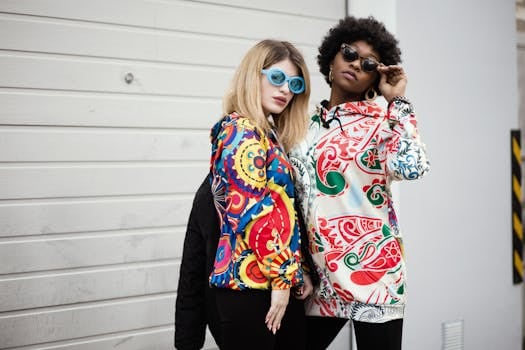Denim Dynasty: Evolution of Blue Jean Culture
Denim has been a wardrobe staple for decades, but its history and role in fashion goes beyond its current status as a basic piece of clothing. The iconic blue fabric has a rich history and has undergone countless transformations, making it a symbol of cultural evolution. From gold miners to Hollywood stars, denim has played a significant role in shaping the way we dress and express ourselves. So let’s take a deep dive into the evolution of blue jean culture – the Denim Dynasty.
The Birth of Denim
Denim was first invented in the late 1800s by German immigrants, Levi Strauss and Jacob Davis. Originally used as sturdy fabric for workwear, the duo created the classic blue jean by weaving together indigo-dyed cotton yarn. The pants were designed with rivets to make them more durable for miners during the California Gold Rush. But little did they know that these simple pants would become a global fashion phenomenon.
The Rise of Levi’s
In the early 1900s, Levi’s blue jeans gained popularity among farmers, cowboys, and other manual laborers. The pants were no longer just workwear, but a symbol of rugged masculinity and hard work. By the 1920s, Levi’s introduced the first women’s denim overalls, catering to the rising demand from female workers during World War I. However, it wasn’t until the 1950s that blue jeans became a part of mainstream fashion.
The Rebels and Rockstars
In the 1950s, blue jeans became a symbol of rebellion and non-conformity, thanks to James Dean and Marlon Brando. Their on-screen roles in “Rebel Without a Cause” and “The Wild One” solidified the idea of denim as a sign of youthful rebellion. Soon, rockstars like Elvis Presley and The Beatles added blue jeans to their stage wardrobe, making them even more popular among the younger generation.
The Denim Revolution
In the 1960s and ’70s, denim went through a revolution. From bell-bottoms to flares and patchwork, blue jeans became a canvas for self-expression. It was also during this time that designer jeans emerged. Brands like Calvin Klein and Gloria Vanderbilt introduced designer denim to the world, and it became a status symbol.
The Glamour of Denim
In the ’80s and ’90s, denim took on a more glamorous persona. Celebrities and supermodels like Brooke Shields and Cindy Crawford were seen in high-waisted, acid-washed jeans, paired with oversized blazers and statement accessories. This decade also saw the rise of denim jackets, which became a must-have item in everyone’s wardrobe.
Denim Goes Global
In the 2000s, denim became a global phenomenon. With the rise of social media and fast fashion, denim was no longer confined to America but became a part of mainstream fashion in countries like Japan, Italy, and France. Inclusivity also played a significant role in denim’s evolution, with brands offering a range of styles, fits, and sizes for all body types.
The Future of Denim
Today, denim is not just limited to jeans. We have denim skirts, dresses, jackets, and even shoes. It has become a versatile fabric, suitable for all occasions. Sustainable and ethical production methods have also emerged, making it possible to buy eco-friendly denim. The future of denim looks bright, with innovative techniques like laser washing, which reduces water waste, and digital customization, where customers can design their jeans from scratch.
The Denim Dynasty Lives On
The Denim Dynasty is far from over. With its deep roots in history and its ever-evolving nature, denim will continue to be a significant part of fashion and culture. It has gone from functional workwear to a symbol of rebellion, glamour, and inclusivity. So the next time you put on your favorite pair of blue jeans, remember the Denim Dynasty and its transformative journey.





